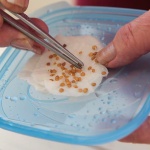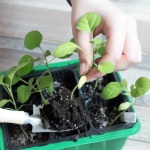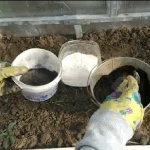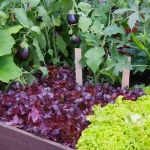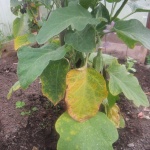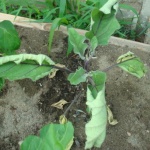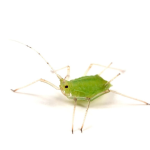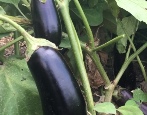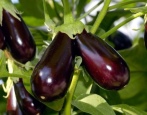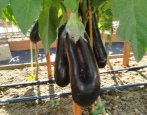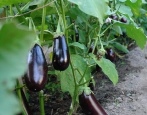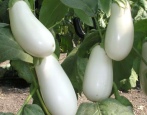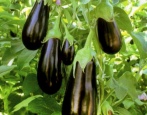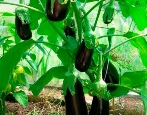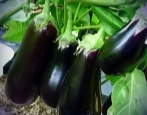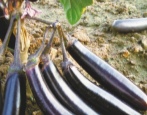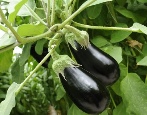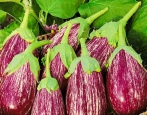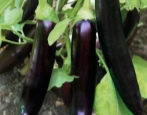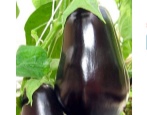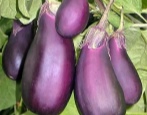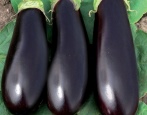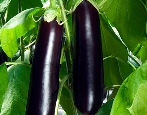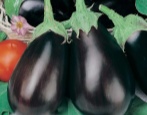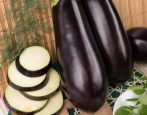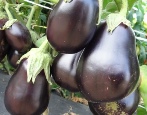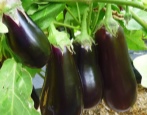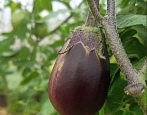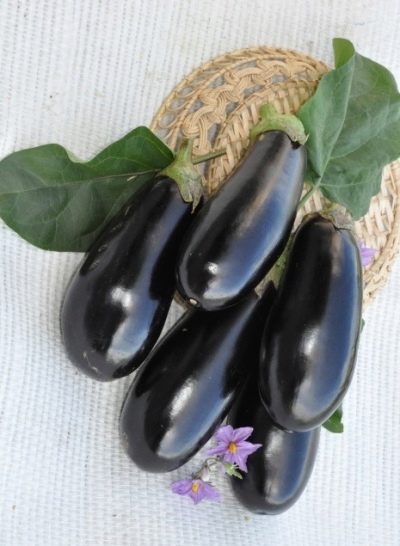
- Authors: Avdeev Yu.I., Kigashpaeva O.P., Ivanova L.M., Alekseeva V.S. (All-Russian Research Institute of Irrigated Vegetable and Melon Growing)
- Year of approval: 1986
- Bush height, cm: 40-58
- Fruit shape: shortened pear-shaped
- Fruit weight, g: in technical ripeness 252-352
- Yield: high yielding
- Keeping quality: excellent
- Transportability: excellent
- Marketability: high
- Ripening terms: mid-season
Eggplant Albatross is a popular variety suitable for both outdoor and greenhouse cultivation. Eggplant attracts gardeners with high yields, large fruits and resistance to various diseases and pests.
Description of the variety
The albatross is a fairly compact variety. Specifications:
bushes - low, up to a maximum of 58 cm;
leaves are medium-sized, dark green, oval-pointed;
survival rate in the ground is good.
The variety is especially undemanding to care, for which it is appreciated by gardeners.
Characteristics of the appearance of plants and fruits
Closed bushes of small height do not take up much space on the site, the eggplant devotes most of its energy to the formation of large fruits. Harvest characteristics:
form - shortened pear-shaped;
length - up to 14 cm;
weight - up to 352 g;
the skin is dense, light purple in color.
Eggplant has a greenish flesh, rather juicy.
Purpose and taste
Tasters note the excellent taste characteristics of the albatross eggplant. The harvest can be used to prepare first and second courses, as well as to create various blanks.
Ripening terms
On average, the variety forms fruits in 132 days from the moment the seedlings are planted in the ground.
Yield
The yield indicator under optimal growing conditions reaches an average of 6.5 kg per square meter. When planting eggplant in open ground, the indicator will be slightly lower.
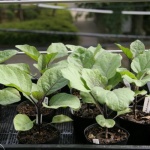
To get a tasty and bountiful eggplant crop, you must first grow strong and healthy seedlings. This culture is considered very capricious, therefore, you need to take care of seedlings when growing at home as correctly and carefully as possible.
Landing scheme
Planting of seedlings is carried out in accordance with the following scheme.
Up to 40 cm recede between the seedlings.
70 cm is kept between the rows.
It is important that there are no more than 4 eggplant bushes per square meter of the garden.
Gardeners prefer to grow Albatross in greenhouses due to the long ripening period.
Growing and care
Eggplant Albatross on the site is grown by seedlings. Before this, the seeds are prepared for planting in separate containers.
Selection. The seeds are soaked in a glass of water. Whole samples remain at the bottom, empty ones float.
Disinfection. Whole and large seeds are placed in a solution of potassium permanganate to strengthen the immunity of the future plant.
Treatment. The seed is additionally sprayed with growth stimulants.
Conditions for sowing seeds:
the place where the containers with seeds will stand should be warm and lighted;
it is better to use peat pots for planting seeds;
the maximum sowing depth should not exceed 1-2 cm;
after planting the seeds, the soil should be watered abundantly and covered with transparent material;
the soil should be loose and moderately moist.
It is not recommended to plant seeds in too wet soil, otherwise they will quickly rot.
After 50-60 days after planting the seeds, they begin to transplant the seedlings into open ground or a greenhouse. Usually this is the second half of May or early June. After that, it remains to take care of the care.
Watering. Eggplant doesn't require a lot of water.Water the plant only if the soil is too dry.
Top dressing. On average, eggplant should be fertilized up to 4 times per season. Basically, fertilizers are applied during the period of active growth, flowering and fruiting. Most often, organic compounds and mineral complexes are used.
Loosening and weeding. Mandatory procedures that should be started immediately after watering. With their help, it will be possible to accelerate the flow of nutrients to the roots of the plant.
Additionally, gardeners recommend shaping the eggplant. Affected and too long stems should be cut off, so that the variety would use all its strength to form fruits.
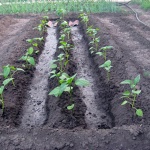
Planting eggplant is one of the most important stages in growing. When choosing a place for eggplants on your site, it is important to remember that this culture should be in warm soil, constantly illuminated by the sun. The plant is also very fond of spacious, open spaces, since its roots can grow over sufficient areas.


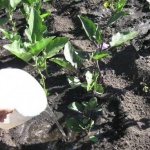
Disease and pest resistance
Albatross is a fairly disease-resistant variety, but this does not mean that the plant is not capable of getting sick. Bushes are often subject to a number of ailments.
Blackleg. A common disease, the formation of which is explained by excessive watering. To prevent its occurrence, the amount of water introduced into the soil should be reduced.
Late blight. A fungal disease that enters the plant due to fungal strains in the soil. You can prevent the development of infection by treating the bushes and reducing watering.
Gray rot. Another popular disease that leads to the death of the plant. If rot is found, damaged elements and fruits should be removed, and the bushes should be treated.
Mosaic is also a frequent "guest" of the Albatross. Basically, the disease infects dive bushes and is expressed in the form of large spots on the leaves. If you do not take action in time, the bush will die.
Among the common pests, slugs are worth noting. To prevent their reproduction with the subsequent destruction of the eggplant, it is worth removing the pests by hand, and also treating the plant with special compounds.
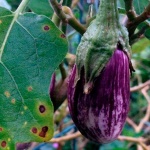
Eggplant is one of the most demanding crops. For its successful cultivation, it is necessary to create optimal conditions, as well as to carry out prevention and fight against diseases and pests. Eggplant often infects both fungal and viral diseases. If treatment is not started on time, you can completely lose the crop.
Review overview
Gardeners note large fruits that are resistant to long-term transportation. And also among the advantages are:
lack of bitterness in fruits;
unpretentious care;
strong immunity.
If you approach the planting of a crop correctly, as well as take care of the care of the plant, you will be able to get high yield rates.
